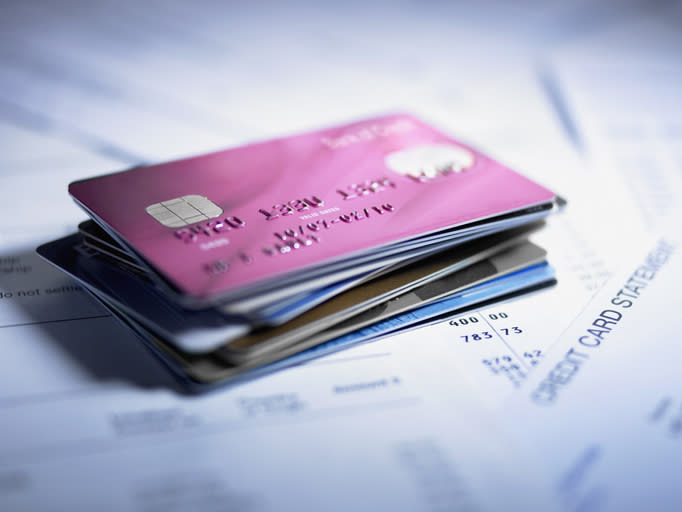Credit card debt is soaring, especially in these cities

(NEXSTAR) – Americans are falling behind on their credit card payments at a level not seen in more than a decade amid high interest rates and persistent inflation, but some cities have far higher average debts than others, a study found.
Four of the five cities with the highest average household credit card debt are located in California, a study by finance site WalletHub found.
3 signs it’s time to pause your credit card spending
Using data from the Census Bureau, TransUnion and the Federal Reserve, the study’s authors looked at inflation-adjusted household debt in the country’s largest 181 cities found Santa Clarita, California to have the highest average household credit card debt ($21,836), followed by Chula Vista, CA ($20,920), New York, NY ($19,207), Fontana, CA ($18,843) and Rancho Cucamonga, CA ($18,549).
Rank* | City | Household Credit Card Debt | Total Credit Card Debt |
|---|---|---|---|
1 | Santa Clarita, CA | $21,836 | $1,601,940,835 |
2 | Chula Vista, CA | $20,920 | $1,737,924,020 |
3 | New York, NY | $19,207 | $63,051,659,994 |
4 | Fontana, CA | $18,843 | $1,052,484,026 |
5 | Rancho Cucamonga, CA | $18,549 | $1,067,576,023 |
6 | Pearl City, HI | $18,525 | $277,629,365 |
7 | Riverside, CA | $18,094 | $1,638,261,858 |
8 | Oxnard, CA | $18,068 | $923,256,732 |
9 | Chesapeake, VA | $17,993 | $1,644,029,202 |
10 | Pembroke Pines, FL | $17,896 | $1,124,017,882 |
11 | Moreno Valley, CA | $17,847 | $962,997,139 |
12 | Scottsdale, AZ | $17,502 | $2,027,197,821 |
13 | Santa Ana, CA | $17,500 | $1,357,153,414 |
14 | Plano, TX | $17,410 | $1,870,634,960 |
15 | Gilbert, AZ | $17,305 | $1,562,646,307 |
16 | Glendale, CA | $17,304 | $1,264,996,463 |
17 | Henderson, NV | $17,013 | $2,120,265,216 |
18 | Virginia Beach, VA | $16,947 | $3,031,986,253 |
19 | Los Angeles, CA | $16,873 | $23,612,096,710 |
20 | Huntington Beach, CA | $16,767 | $1,301,835,881 |
For the full ranking of the 181 largest cities, see the WalletHub study.
“Some of the cities where households owe the most credit card debt, like Santa Clarita and Chula Vista, CA, have high median incomes, high debt payoff rates and low delinquency rates; this indicates that residents may simply have high credit card limits and can afford to borrow more,” according to Cassandra Happe, WalletHub analyst. “Other cities, like New York, have high average credit card debts driven more by financial struggles, which we can see in the number of people who are in financial distress or who are delinquent on their debt.”
What’s behind the debt?
For many American families, it’s likely a combination of factors.
With the Federal Reserve raising its key interest rate to fight nagging inflation, the interest rate on new credit cards has also jumped higher. As of Thursday, the average APR was 24.80%, according to LendingTree.
Tavares said that the number of bills that have become delinquent is now higher than it was before the pandemic, adding that renters appear to be especially vulnerable.
Source: WalletHub
“Younger and less affluent people are experiencing challenges,” Silvio Tavares, CEO of VantageScore, a credit score modeling and analytics company, told the Associated Press. “And high interest rates are having an effect.”
Along with high interest rates and inflation driving up the cost of everyday goods, Americans can no longer rely on some of the pandemic-era stimulus instruments, such as payments, the child tax credit and increased unemployment benefits that boosted household finances.
10 US cities where home prices are getting worse — and 5 where they’re dropping
While not every person with a rolling credit card debt is delinquent, many Americans are increasingly at-risk of not making payments, according to Bruce McClary, senior vice president at the National Foundation for Credit Counseling.
There’s likely a large group of consumers paying minimum balances and staying out of delinquency for now but who are too financially stressed to pay their balances in full, McClary said. A worsening of the economy could push those consumers into severe delinquency.
For those people working to get out of debt, McClary recommends calling credit card companies to negotiate interest rates, fees and long-term payment plans.
“The best thing to do is to reach out, give an honest assessment of your ability to pay over time, and ask what options are available to you both ‘on and off-the-menu,’” McClary said. This kind of phrasing can give creditors an opening to offer more flexibility, he said.
The Associated Press contributed to this report.
Copyright 2024 Nexstar Media, Inc. All rights reserved. This material may not be published, broadcast, rewritten, or redistributed.
For the latest news, weather, sports, and streaming video, head to The Hill.

 Yahoo Finance
Yahoo Finance 